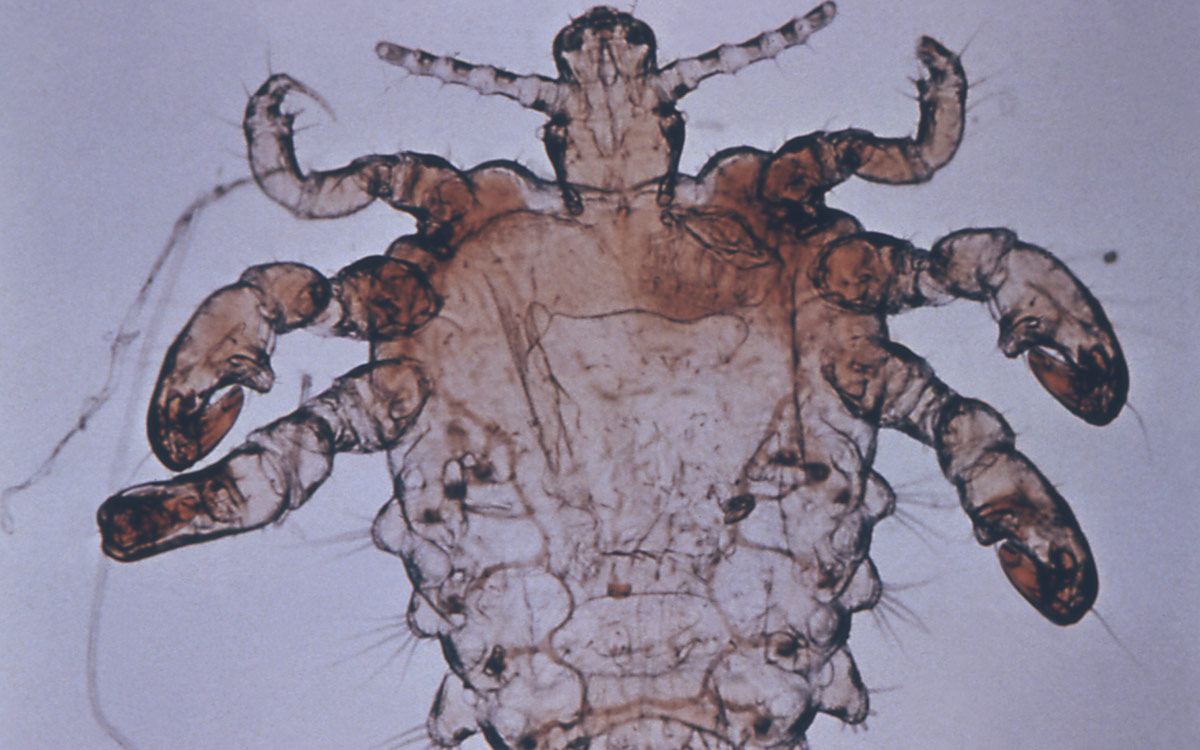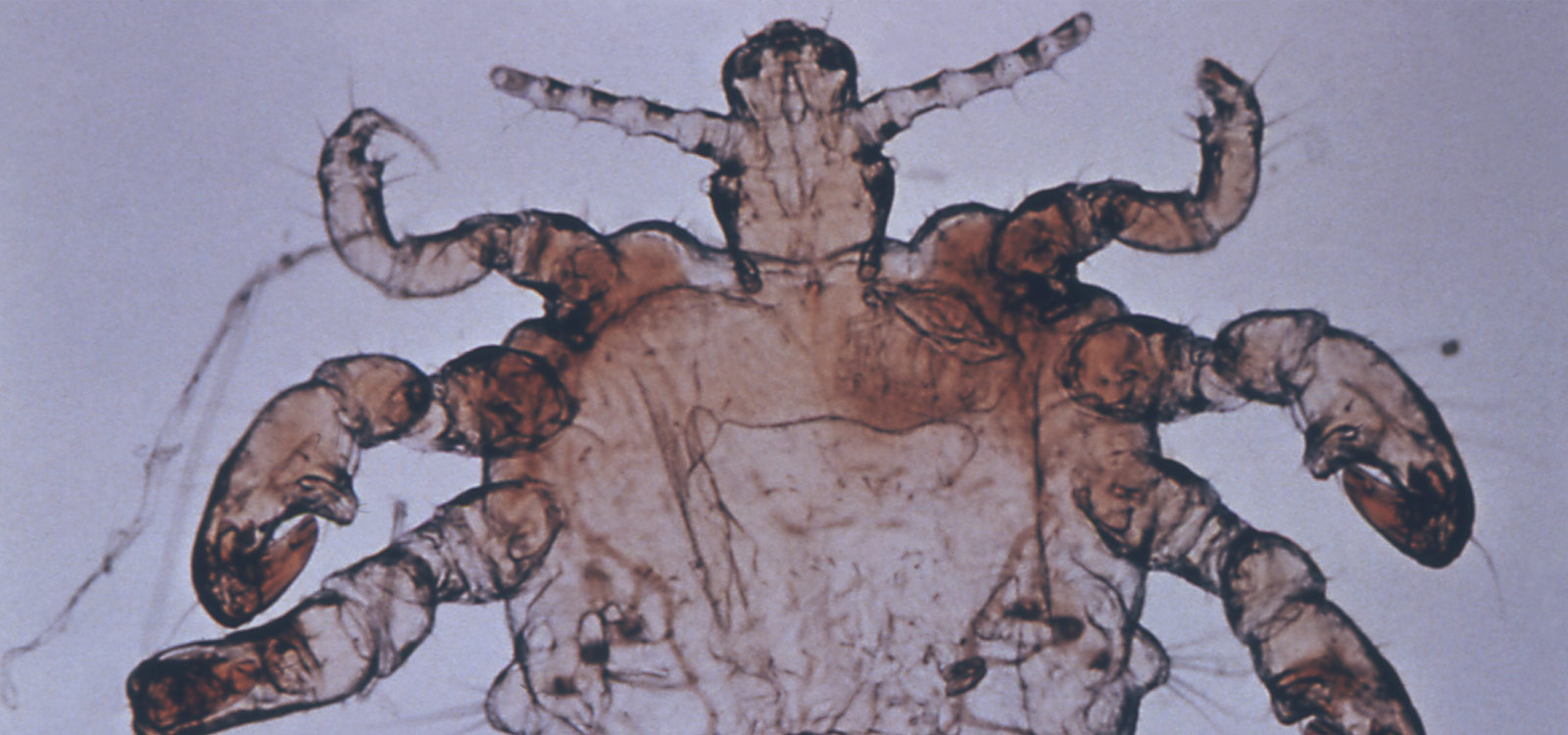What you should know
Risks for transmission
- Transmission occurs primarily during intimate sexual and non-sexual contact
- Pubic lice can live for one or two days in the bedding, towels and clothes of an infected individual. These items can be a source of transmission.
Symptoms
- Skin irritation and inflammation accompanied by itchiness and redness
- Louse feces, which looks like fine black particles, may appear in clothing or on bedding
- Small blue spots may appear on the skin where the lice have bitten

Treatment
- All household contacts and recent sexual partners within the past month should be treated to prevent re-infestation.
- The itchiness can persist for weeks after successful therapy. Antihistamines (anti-itch medication) and mild steroid creams may be used to control this.
- Treatment consists of a medical cream or shampoo; special consideration is given to infestations in the eyes. If the first treatment does not work it can be repeated after one week.
- Clothing, bedding and other possible contaminated items should be washed in hot water (50° Celsius/122° Fahrenheit, or higher), dry cleaned, or bagged for three days to a week. Items that cannot be washed or bagged should be vacuumed.
Complications
- Persistent scratching of irritated skin can cause a secondary bacterial infection.

